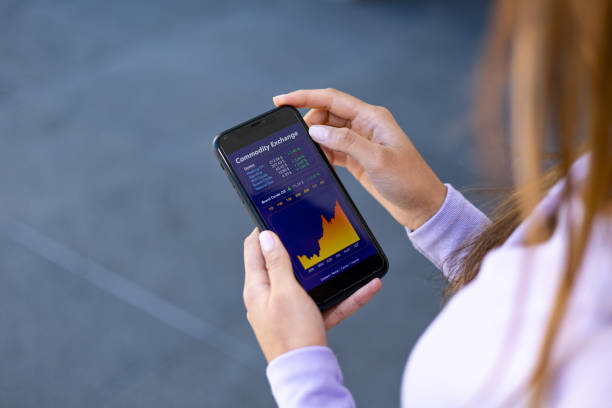CFD trading, or Contract for Difference trading, has emerged as a popular form of financial speculation that allows investors to speculate on the price movements of a wide range of financial instruments without actually owning the underlying asset. This form of trading has gained significant traction due to its flexibility and the potential for high returns. In this comprehensive analysis, we will delve into the intricacies of CFD trading (In Taiwan, it is called “差價合約交易“), its benefits, risks, and how it compares to other forms of trading such as Foreign Exchange (Forex) trading.
Understanding CFD Trading
CFD trading operates on the principle of margin trading, where traders only need to deposit a fraction of the total contract value to open a position. This leverage can amplify both gains and losses, making it a double-edged sword. Traders speculate on the price movements of various assets such as stocks, indices, commodities, and currencies by taking long or short positions. If the market moves in their favor, they profit; if not, they incur losses.
Benefits of CFD Trading
One of the primary benefits of CFD trading is the ability to go long or short on a wide range of markets. This flexibility allows traders to capitalize on both rising and falling markets, providing more opportunities for profit. Additionally, CFD trading offers tax advantages in some jurisdictions, as profits are often taxed at a lower rate than other forms of investment income.
Another advantage is the use of leverage, which can magnify profits significantly. However, it’s crucial to remember that leverage also magnifies losses, and improper risk management can lead to substantial financial losses. CFD brokers typically offer a range of leverage options, allowing traders to choose a level that suits their risk tolerance and trading strategy.
Risks Associated with CFD Trading
While the potential for high returns is a significant draw, CFD trading also comes with inherent risks. The use of leverage can lead to substantial losses if the market moves against a trader’s position. Additionally, the fast-paced nature of CFD trading can exacerbate these risks, as positions can be closed out without warning if the margin levels fall below the required minimum.
It’s also important to consider the impact of spreads and commissions on trading costs. While some brokers offer tight spreads, others may have wider spreads and higher commission fees, which can erode profits over time. Traders must carefully evaluate the cost structure of different brokers before committing to a trading platform.
CFD Trading vs. Foreign Exchange Trading
Foreign exchange trading, or Forex trading (In Arabic, it is called “تداول الفوركس“), is another popular form of leveraged trading that involves the buying and selling of currencies. While there are similarities between CFD trading and Forex trading, such as the use of leverage and the ability to go long or short, there are also key differences.
Forex trading is primarily focused on currency pairs, whereas CFD trading allows access to a broader range of assets, including stocks, indices, and commodities. This diversity can be an advantage for traders looking to diversify their portfolios or capitalize on specific market trends.
Another difference lies in the market structure. The Forex market is a decentralized market with no central exchange, while CFD trading is typically conducted through brokers who act as intermediaries between traders and the market. This can impact liquidity and the ease of execution.
Strategies for Successful CFD Trading
Developing a solid trading strategy is crucial for success in CFD trading. Traders should start by identifying their trading goals, risk tolerance, and time horizon. This will help determine the appropriate assets to trade and the level of leverage to use.
Technical and fundamental analysis are essential tools for identifying trading opportunities and managing risk. Technical analysis involves studying historical price movements to identify trends and potential entry and exit points. Fundamental analysis, on the other hand, involves assessing the underlying economic factors that influence asset prices.
Traders should also implement proper risk management techniques, such as setting stop-loss orders to limit potential losses and taking profit at predetermined levels to lock in gains. Diversification can also help spread risk across different assets and markets.
Regulation and Choosing a Broker
The regulation of CFD trading varies by jurisdiction, with some countries having strict regulations in place to protect investors, while others have more lax oversight. It’s essential for traders to choose a broker that is regulated by a reputable financial authority, as this provides a level of protection and ensures that the broker adheres to certain standards of conduct.
When selecting a broker, traders should consider factors such as the range of assets offered, the quality of the trading platform, the level of customer support, and the cost structure. It’s also important to research the broker’s reputation and track record to ensure they are reliable and trustworthy.
Conclusion
CFD trading offers a flexible and potentially lucrative way to speculate on financial markets. However, it’s not without risks, and traders must approach it with caution and a well-thought-out strategy. By understanding the nuances of CFD trading, managing risk effectively, and choosing a reputable broker, traders can increase their chances of success in this dynamic market. Whether trading CFDs or engaging in Foreign exchange trading, the key to profitability lies in knowledge, discipline, and a commitment to ongoing learning and adaptation.





